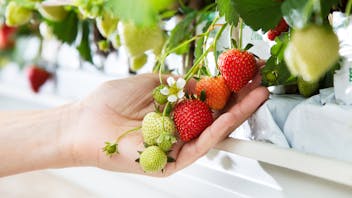The world of commercial strawberry growing is at a crossroads. Internal and external factors are pushing forward-looking growers like Genson to rethink their production practices, not least the substrate they use. In this context, a couple of years back Genson asked independent expert, Elke Schellekens from Floraison, to lead a series of trials testing different substrates, including Grodan stone wool. The trials are still running, but Elke took a moment out from her busy schedule to reflect with the people at Grodan who’ve been involved with the trials on progress to date.
Genson Group are a major plant propagator/grower and a leader in the Dutch strawberry market, with clients including the country’s largest supermarket chain. Elke Schellekens is a soft fruit and flower mapping R&D expert. She looks at new varieties and how best to grow them. If a client wants to know anything, from optimal feeding schedules, to whether or not to cut leaves, to the best tray plants to use, Elke will carry out the practical research to find the answer.




Food Forward: The promising future of strawberry cultivation
In this Food Forward, we discuss the possibilities and challenges of growing strawberries in the greenhouse with three experts from the sector. They give updates on the latest trends and developments in greenhouse strawberry cultivation, and share their predictions for future-proof, efficient strawberry cultivation.














